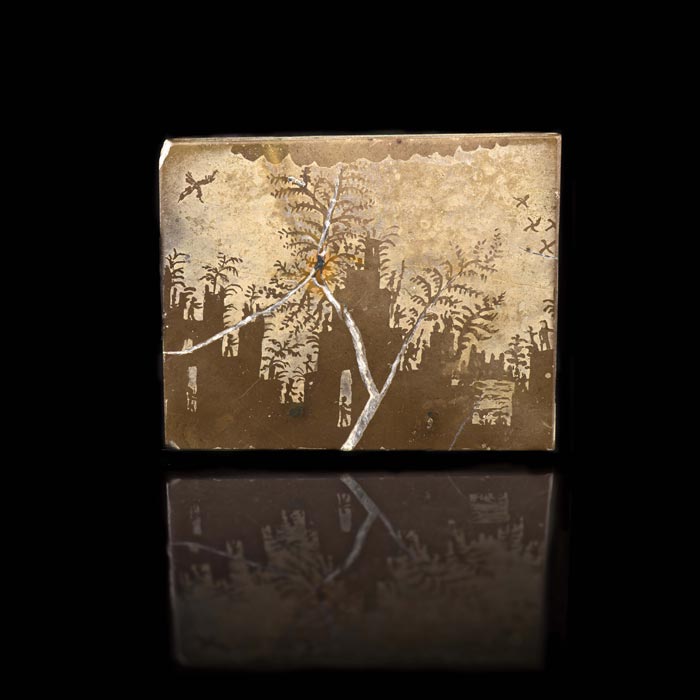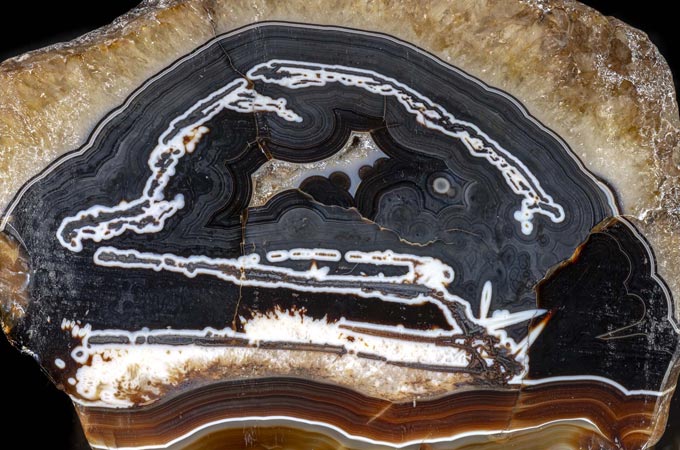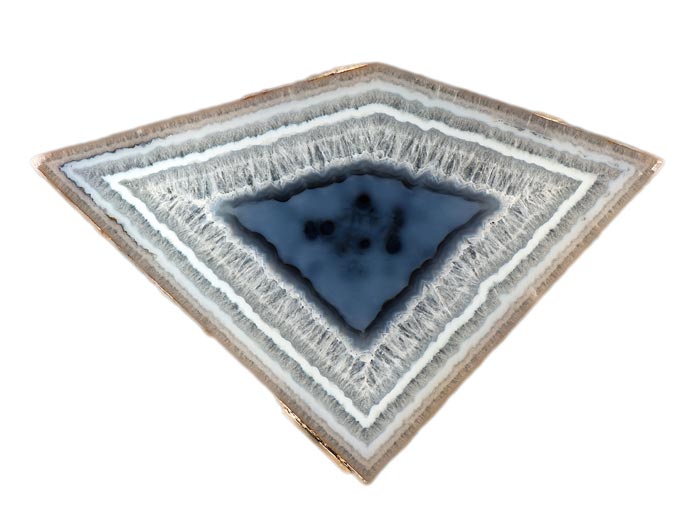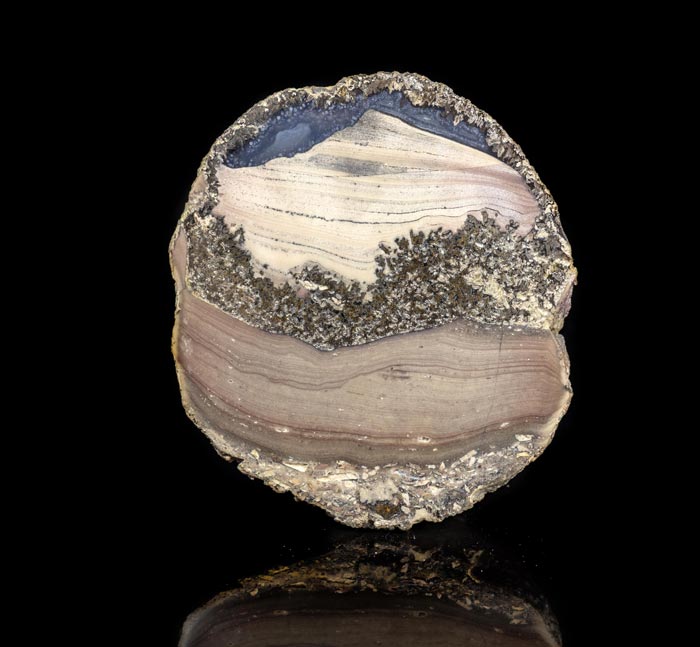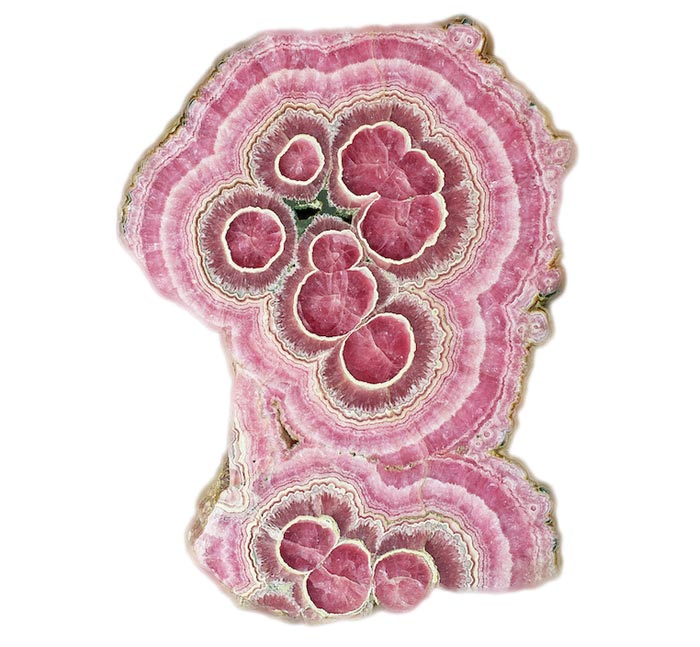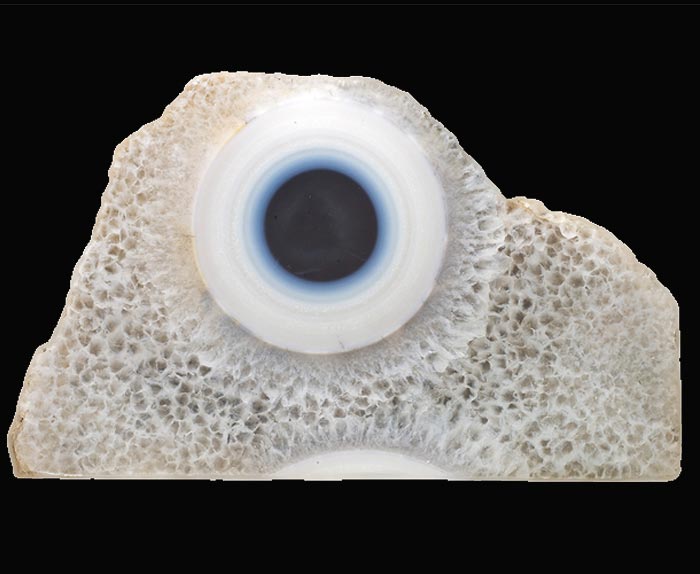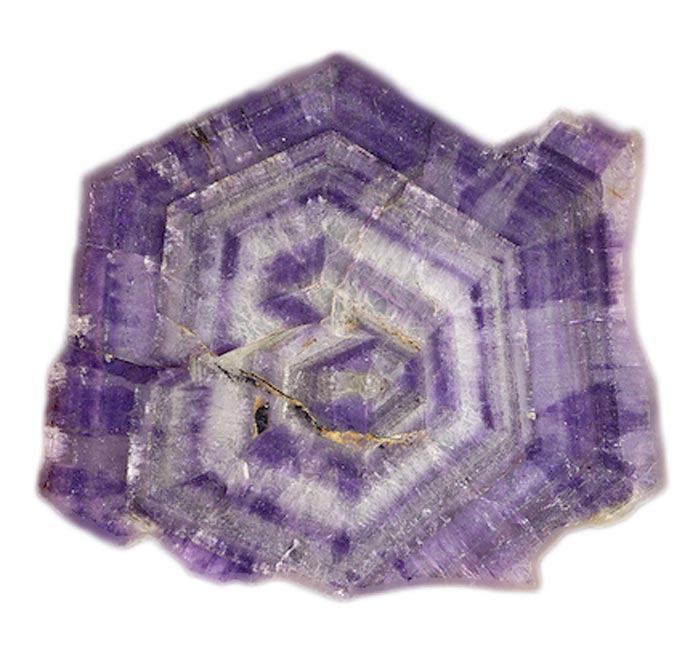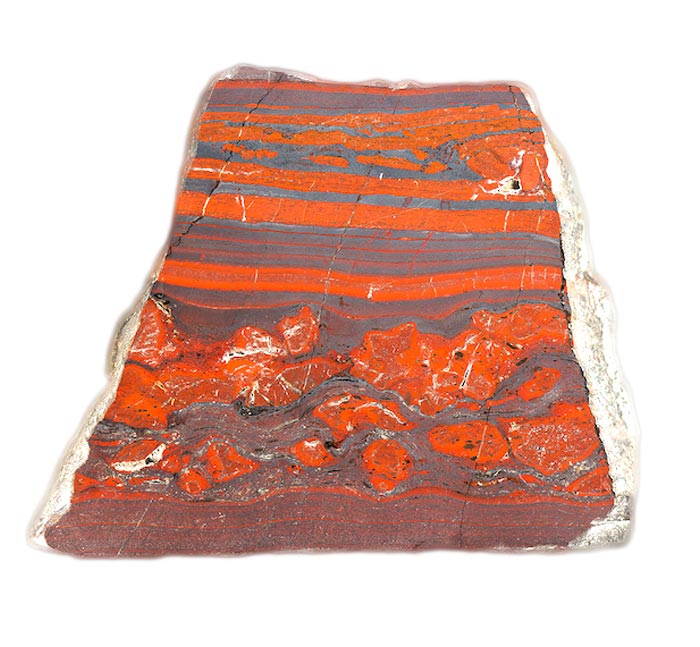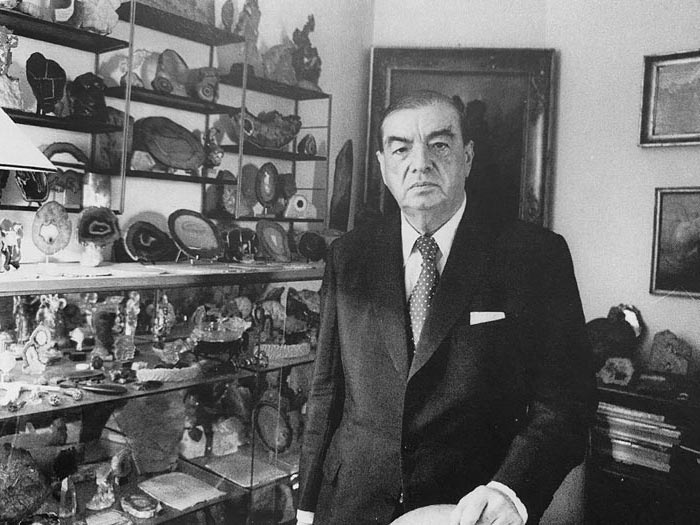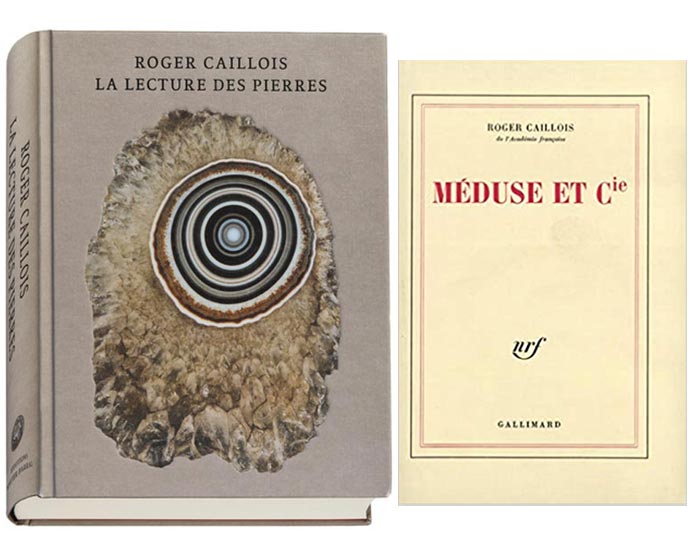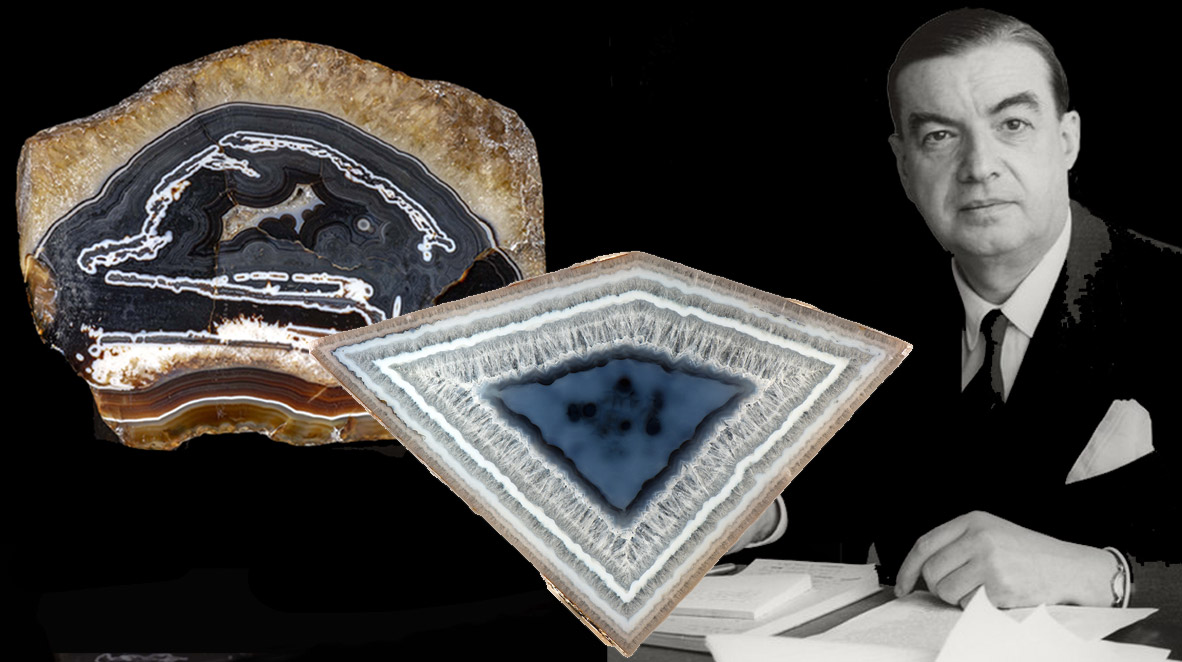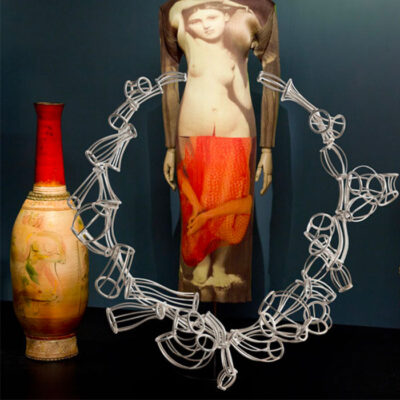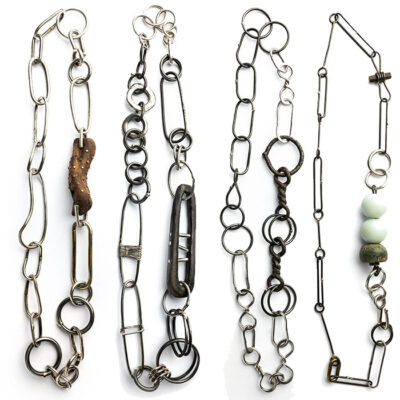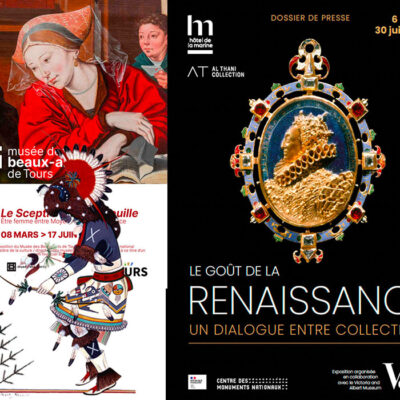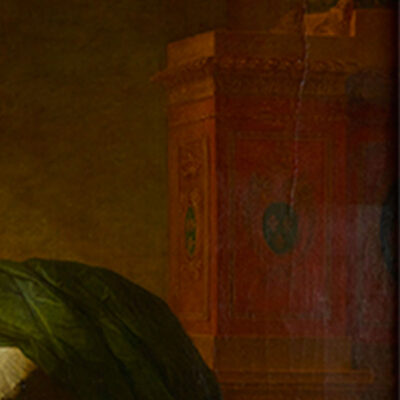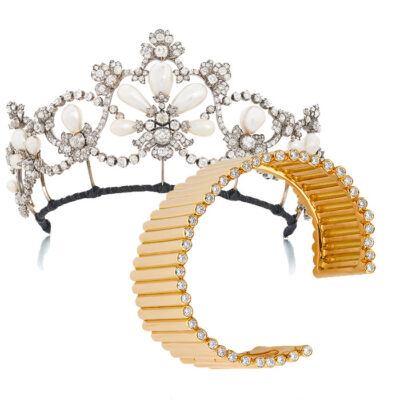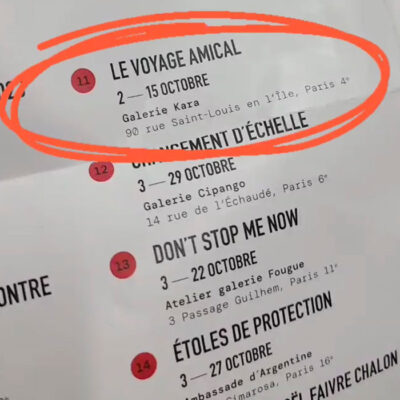My agenda
26 May 2020
Share
Roger Callois’ dream stones in “Gems” exhibition
On the occasion of the “Gems” exhibition at the National Museum of Natural History (at the Galerie de l’Évolution du Jardin des plantes), Professor François Farges explores one of the must-see attractions: Roger Caillois’s collection of dream stones, which is finally almost complete.
Interview by Sandrine Merle.
Sandrine Merle. What are the major specimens of Roger Caillois presented in “Pierres Précieuses”?
François Farges. As part of the exhibition, the Museum will present a dozen specimens that have never before been shown to the public. In particular, visitors will be able to admire “Calligraphie Royale “, a Brazilian onyx plaque with ribbon motifs, and ” La Cime ” or ” Le Château “, the most exceptional, documented and reproduced stone. I was keen to see it for myself (it was recently acquired by the Museum) to dispel any notion of deception around to its motif – a miniature drawing composed of branches of giant ferns, swirling birds, roaring clouds, and a castle populated by gnomic silhouettes… Well, after careful examination, especially on the reverse side, there can be no doubt: this is indeed the work of nature!
S.M. You seem to have a particular affinity with Roger Caillois’ collection, central to this exhibition?
François Farges. In 1975, a sumptuous slice of agate, known as “Agate blessée” on the cover of ” Monde des Minéraux ” set me alight as a young girl. I was 13 years old… In 2006, when I was appointed by the Natural History Museum to supervise the mineralogy collections, I discovered that it included the one by Caillois. It became one of my priorities along with the Crown Jewels because I thought people would appreciate it, even though these two collections were not on public display. I then plunged into the reserves to compile them, photograph them from a mineralogical aesthetic point of view and produce a sort of catalogue raisonné. And recently, I burrowed deep into the archives (press clippings on his works, correspondence, etc.) held at the municipal library of Vichy, a town that Roger Caillois was particularly fond of. He would also have liked it to dedicate a museum to him, which it never agreed to do, to his great disappointment.
S.M. This collection, composed of 1,175 specimens, is one of the Museum’s major collections, how did it get there?
François Farges. It reached the museum in two stages: the first 212 stones came from a donation by his widow, Alène Caillois, in 1998 (Caillois died in 1978), while the second lot – by far the most important part, consisting of 963 pieces, also including everyday objects from Caillois – was acquired in 2017 thanks to the patronage of Van Cleef & Arpels. Today, we are only missing a dozen or so “flagship” specimens from this ensemble. It may appear “modest” from a mineralogical point of view but is exceptional from an aesthetic, poetic and societal point of view, and renowned throughout the world, perhaps even more so than in France. It mainly comprises image-bearing stones: those which, once cut and polished, reveal shapes and motifs that incite reverie, like natural paintings. Among the agates that occupy a very important place in this collection is the last one he acquired: “The River Alpheus”. Unfortunately, it is in the possession of a private collector.
S.M. How did this French intellectual known as a man of letters, poet, sociologist, and a member of the Académie Française come to be interested in dream stones?
François Farges. Contrary to of what has often been written, this collection had no direct link to surrealism, from which he broke away very quickly, as early as 1935, even though André Breton and Brassaï were already inspired by the crystalline forms of the mineral. Caillois began collecting them much later, in the mid-1950s: his first stone was a labradorite whose iridescence he likened to that of the wings of butterflies, which he also collected. In particular, he developed the concept of “diagonal science”… which is in fact more poetic than scientific! More prosaically, it represents the conceptual and aesthetic rapprochement of elements from the different realms of the natural world that he develops in Medusa and Co in 1960. During these years, Roger Caillois was also very impressed and influenced by the tradition of Roman and Chinese dream stones, the mengshi accompanied by poems. His great annual excursion was the fair of Sainte-Marie-aux-Mines but also to the region of Idar-Oberstein, Germany, not to mention various long trips to the countries of origin of these stones, between India, the United States, Japan and Brazil.
S.M. Roger Caillois’ paesins, agates, onyx, jaspers and other quartzes will be accompanied, in the exhibition, by his sumptuous texts, real prose poems…
François Farges. Some cartels take extracts from L’écriture des pierres, a work I recommend you start with because it is more well-known and accessible than Pierres réfléchies, which is a later, more nervous work. Roger Caillois transfigures his stones through writing with various juxtaposed photographic illustrations of great graphic beauty by Luc Joubert and Alexis Vorontzoff. While he begins, in his original manuscripts, with very professorial sentences that he immediately crosses out, these quickly become – while remaining very rational – more and more neurotic, in the creative sense of the word! He is no longer in descriptive but in the shock of the feeling of observation. However reasoned and uncompromising, he enters into total communion with his mineral vision. Caillois says “I look more deeply, in order to pinpoint the mystery”. That said, for me, his writings also express the inspiring fear of death, often inherent in the attraction of so-called eternal stones. For there is a possible survival in stones, just as there is in literature. But the geologist knows that this is an illusion, every stone is doomed to destruction even if the lapses of time involved can lead us to believe in eternity.
From 16 September 2020 to 14 June 2021, “Pierres Précieuses” at the National Museum of Natural History, Galerie de l’Évolution du Jardin des plantes – Paris
Related articles:
Jean Vendome’s academician’s sword in the “Medusa” exhibition


